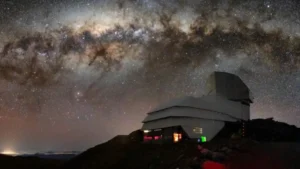On July 14, the Chandrayaan-3 spacecraft launched from the Sriharikota space center on the east coast of India. This marks India’s second attempt to land on the moon and its third lunar mission. The craft should reach the moon on August 23 or 24. If successful, India will be only the fourth country to soft land on the moon.
For this mission, the Indian Space Research Organization (IRSO) learned from its failed attempt in 2019. The Chandrayann-3 spacecraft is a new and improved version of the Chandrayann-2. Chandrayann, Sanskrit for “moon craft,” does not contain an orbiter this time but only a lander and a rover. The lander has stronger legs, more propellant, and more solar cells.
Chandrayaan-3 Mission update:
The spacecraft’s health is normal.The first orbit-raising maneuver (Earthbound firing-1) is successfully performed at ISTRAC/ISRO, Bengaluru.
Spacecraft is now in 41762 km x 173 km orbit. pic.twitter.com/4gCcRfmYb4
— ISRO (@isro) July 15, 2023
On the previous mission, the lander crashed into the moon because of a software problem. Mission Control lost all communication with the lander when it was two kilometers from the surface. It suddenly diverged from its planned pathway, and the specialists back on Earth weren’t able to correct this. So it crashed.
This time, the spacecraft will not land immediately on the moon. It will take a slightly longer, more fuel-efficient route. It should enter the moon’s orbit on August 5 and land a few weeks later, further south than any previous mission. The rover will then take thermal measurements, measure seismic activity, and examine the elements within the rocks and soil in that region.

Indian spacecraft Chandrayaan-3 as it waits to launch. Photo: IRSO
Though they hope to collect a significant amount of data at the moon’s south pole, the main aim of the mission is to land successfully. The ISRO says that it has already perfected reaching the moon. It is the landing that has proved elusive so far.
Thousands gathered outside the space center to watch the launch, and a million more watched online. For many, India’s space program symbolizes its rising global position. Now the fifth largest economy on Earth, India is keen to show the depth of its technology and innovation.
India has now sent 424 satellites into space for 34 countries. In 2008, it launched Chandrayann-1, which orbited the moon and first discovered water on its surface. In 2014, the Mangalyaan spacecraft went into orbit around Mars.
Next year, IRSO and NASA are undertaking a joint mission to the International Space Station. It is the first time that the U.S. and India have collaborated on such a project. By early 2025, India hopes to send one of its own astronauts into space.






